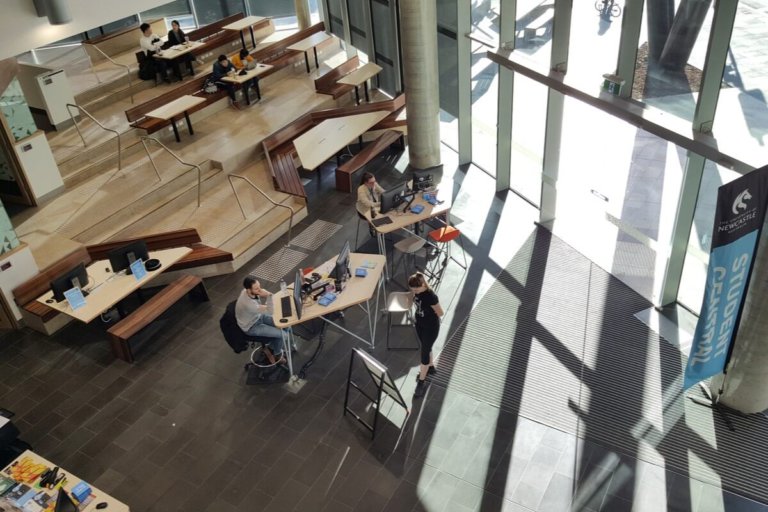
Less selective universities are using predictive analytics to improve student outcomes, especially among those who are struggling academically.
Software company SAS said predictive analytics involves “the use of data, statistical algorithms and machine learning techniques to identify the likelihood of future outcomes based on historical data”, with the objective of providing the best assessment for what will happen in the future.
Its use enables universities to swoop in and grant support for students at-risk of dropping out before things take a turn for the worse, thus improving student outcomes.
Improving university completion rates

Universities shouldn’t just focus on getting students to enrol in university, but also strive to maximise student outcomes. Source: Shutterstock
While a degree represents a stepping stone to prosperity, reports suggest dropout rates remain high across many universities.
For instance, last year, The Guardian reported that figures released by the Higher Education Statistics Agency (HESA) show that the number of students in the UK dropping out within 12 months of their studies has risen for the third successive year. Experts opined that university fees may play a part in drop-out rates.
Earlier this year, The New York Times reported that approximately one in three students who enrol in college never earn a degree.
Reasons for students dropping out may vary – be it the high university fees or their failure to make the grade – but many short- and long-term problems can arise from this.
For some, this may mean having to pay back their student loans despite not walking away with a degree; for others, common problems may include experiencing fewer employment opportunities, lower salaries and lower life satisfaction when compared to university graduates.
While the trend of universities using predictive analytics is still limited, just how effective are they and what are the implications of its use?
Predictive analytics – the right way to boost student outcomes?
Algorithms increasingly direct the trajectories of our lives, sometimes in surprising, and invisible ways https://t.co/x0quBBaD5I
— Wes Edens (@WesEdens) August 18, 2019
Georgia State University in Atlanta, US, has been using predictive analytics to great results. According to The Chronicle of Higher Education, the public research university “raised its six-year graduation rate from 32 percent in 2003 to more than 54 percent in 2017”.
The Hechinger Report wrote that in 2017, Georgia State student Keenan Robinson wanted to major in nursing, but the university’s computer algorithm – which was closely tracking his performance – knew from 10 years of student records that Robinson was unlikely to make the cut.
His academic adviser suggested Robinson enrol into another healthcare major that accepts students with lower grades to help him stay on track and graduate.
In Politico, Kimberly Hefling wrote that while Georgia State may not be the only university using such technology, it stands out for operating longer than others, in addition to its success in improving outcomes “with low-income, first-generation and minority students – groups that have the hardest time succeeding in higher education”.
So, should other universities go down the same route?
While it may seem premature to dash a students’ dream of completing their chosen major before they run into trouble with their performance, some universities may see this as an effective way to tackle university dropout rates.
“Georgia State is encouraging students like Robinson to change their majors in an effort to address one of the most debilitating problems in higher education: low graduation rates,” notes The Hechinger Report.
“Nationally, only about half of students who start college actually earn degrees, according to the National Student Clearinghouse, a non-governmental organisation that tracks college enrollment. Many drop out mired in debt and lacking earning power. In fact, because of crushing debt, students who drop out are often worse off than if they’d never gone to college.”
While the use of predictive analytics has its benefits – both for the student and the university itself – it also raises questions over its limitations.
While some believe that past behaviour is the best predictor of future performance, this negates extenuating factors such as how people can and do change for many reasons, ultimately affecting the outcome of their future success in school.
Liked this? Then you’ll love…
The importance of investing in students’ capabilities
Are universities preparing graduates for the future of work?







